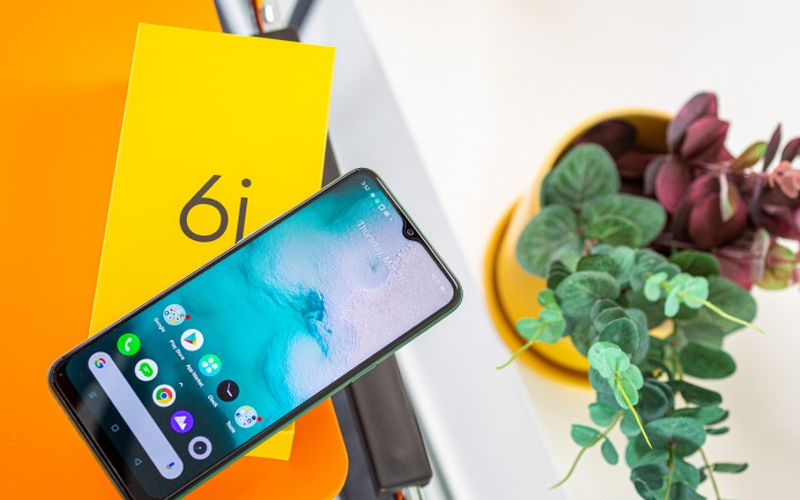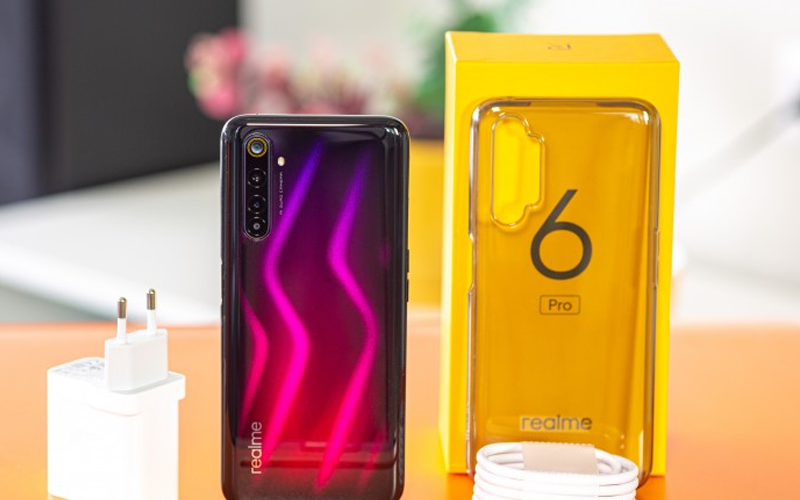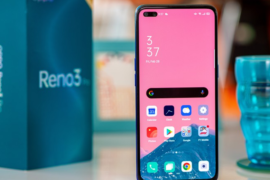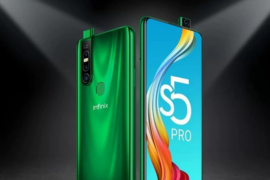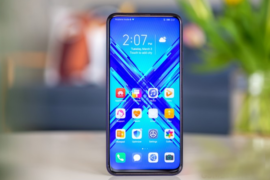SPECIFICATIONS
- Display6.1 inches
- Rear Camera50 MP/8 MP/16 MP
- Front Camera32 MP
- ProcessorKirin 990 5G
- Resolution1080 x 2340
- RAM6GB/8GB
- Operating SystemAndroid 10
- Storage128GB/256GB
- Battery3800 mAh
- WaterproofYes
- Dual SimYes
- Quick ChargingYes
DESIGN
Huawei P40 looks a ton like the Pro models, or that is the thing that we previously thought. Gone are the excellent bends around the screen and it’s recognizably littler. Furthermore, these may be uplifting news for some.

The P40 Pro is publicized for its quad-bended double glass plan, however the P40 has no inclines on its screen edges. Also, that is doing ponders for the hold, just as the mistouch avoidance. Don’t you stress however, enthusiasts of the bends, the back is still trendily twisted towards the aluminum outline – as Huawei likes to call it – flooding.
One thing that is totally absent on the P40 is water-snugness of the shell. The P40 is just IP53 evaluated for medium residue obstruction and light sprinkles. It’s superior to nothing, however at whatever point this entrance division of the Huawei’s leader models closes, it’ll despite everything be late.
Along these lines, the front has the 6.1″ OLED screen with curved punch-gap and adjusted corners. It’s despite everything stunning that we currently call the 6.1-inchers minimal, however the bezel-less period without a doubt diminished the general impression and consequently leave space for additional pixels. Furthermore, because of this littler OLED, the P40 is for sure one sensibly smaller cell phone.
The screen is of broadened 1080p goals, yet on account of the littler board size, the image is very sharp at 422ppi. The glass on it is of obscure cause, however Huawei has been utilizing a type of reinforced glass for some time now.
Tragically, Huawei has decided not to bring 90Hz revive rate on the P40 show and it’s restricted to 60Hz, which is so 2019. However, with 2020 going to be dropped, and all the more significantly – not every person having the option to see the contrast somewhere in the range of 90Hz and 60Hz, we can comprehend Huawei’s reasons not to push for 90Hz over the whole arrangement.
Something else that didn’t make it on the P40 is the self-adjust for the selfie camera. It’s as yet 32MP it despite everything has an IR camera, so progressively secure face open is accessible.
Much the same as on the P30 Pro and P40 Pro, the presentation serves as an earpiece. It vibrates to deliver sound in voice calls and the sound is extraordinary. Tragically, it can’t serve as a speaker, henceforth there are no sound system speakers on both of the P40 telephones.
The under-show unique finger impression peruser is wonderful – it is among the quickest accessible available, with amazing precision and unwavering quality. It has 30% bigger checking territory than the P30 age and works perceptibly quicker and simpler.
The back is the place the photography enchantment is going on and the spring of gushing lava like projecting arrangement houses all basic equipment. Here you can see, left to right, the 16MP ultrawide, the 50MP essential, and the 8MP tele snappers. A double tone streak us underneath, yet there is no fourth camera for profundity purposes.
Huawei has structured the P40s backs to emulate a specific look of the level simple to use cameras from a not really inaccessible time. Furthermore, it most likely works extraordinary for the P40. It accompanies a cost however – the telephone wobbles a great deal when utilized on a level work area or table.
The Deep-Sea Blue, Black, and Ice White variant are with the recognizable gleaming completion – which means they are glossy and tricky. Huawei is additionally selling elective matt models in Silver Frost and Blush Gold – in this way, if hold is significant (it is), and you need a break from the cleaned boards, we unequivocally suggest the matt ones.
Huawei P40 has a metal casing, sensibly measured and formed. It is sufficient to accommodate a legitimate grasp, regardless of whether it isn’t perfect. The matt renditions ought to improve in this viewpoint, obviously.
Around the casing you’ll see the volume and force keys on the right, while the base has everything else – SIM plate, USB-C port, mouthpiece, and speaker.
The P40 spreads at 148.9 x 71.1 x 8.5 mm – just 5mm taller than the iPhone 11 Pro. The P40 weighs 175 grams, which is about 13g lighter than the iPhone. The P40 is in reality a (2020) pocket-sized cell phone.
Dealing with the Huawei P40 is a leader experience – similarly as the greater part of the ongoing glass cell phones. The size is a decent break from the customary huge screen leaders, and the matt adaptations are acknowledged for the grasp. The one thing we do miss is the best possible entrance assurance – everything else is basically extraordinary with the P40.
DISPLAY
Huawei P40 has a 6.1″ OLED show of expanded 1080p goals. The screen, in contrast to the Pro models, bolsters just the standard invigorate pace of 60Hz and that is most likely the greatest distinction between the ordinary and Pro form.
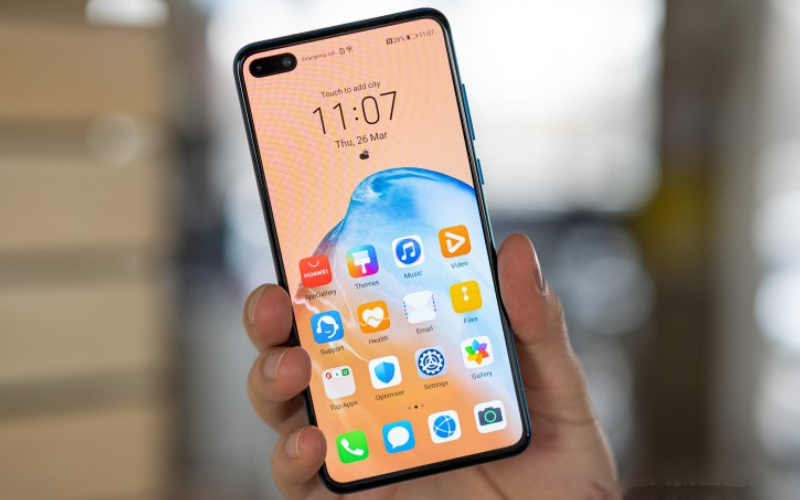
The genuine screen goal is 1,080 x 2,340, which makes for a sharp 422ppi thickness inside this 6.1″ board and 19.5:9 viewpoint. There is a circular pattern at the upper left corner for the double selfie arrangement.
The screen has a level bit of fortified glass on it, however we don’t have the foggiest idea who made it. Our unit likewise accompanied a production line applied screen defender and we had some extremely diligently time when attempting to strip it off for our presentation test.
We estimated a greatest brilliance of 440 nits while modifying the slider physically, which is in accordance with the vast majority of the Samsung-made OLEDs. With Auto empowered, the P40 is illuminating to 590 nits – a pleasant improvement and makes for a generous lift under brilliant daylight.
Presently we should talk about shading exactness. There are two Display choices – Vivid and Normal, each speaking to an alternate shading space – DCI-P3 and sRGB separately. Every one of these settings offers further shading immersion adjusting.
The default screen mode is Vivid and at its default immersion express the presentation has a generally excellent shading precision to DCI-P3 with a normal deltaE of 3.5 and most extreme deviation of 7.2. On the off chance that you change to Normal (sRGB) mode, you will get an ideal adjustment with a normal deltaE of 1.2.
We don’t know if the P40 screen underpins HDR10, however it shouldn’t make any difference. The telephone underpins just the essential Widevine L3 DRM level importance; it can play just SD content on Netflix and Amazon Prime applications, so whether the P40 show has HDR support or not is insignificant. HBO Go requires Google Play Services, so it’s not going to happen.
PERFORMANCE
The Huawei P40 runs on the Kirin 990 5G chipset – which has a somewhat quicker processor than the customary non-5G Kirin 990 chip we worked with on the Mate 30 Pro.
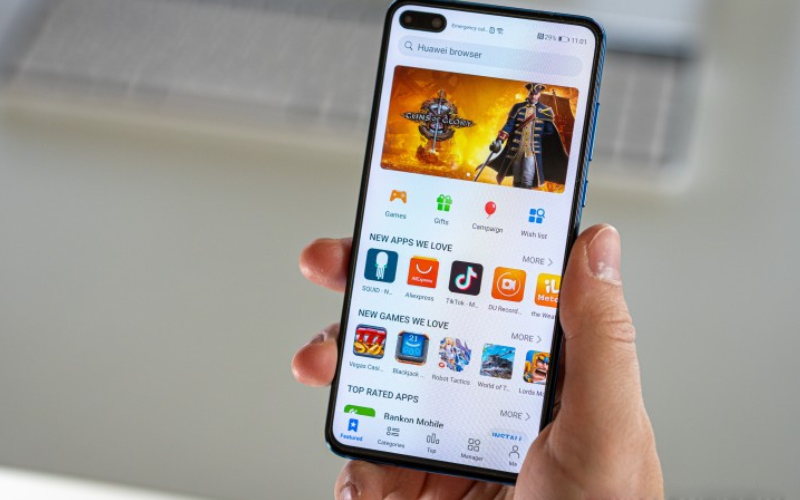
The Kirin 990 5G has an octa-center processor with a recognizable arrangement of Cortex CPUs – 2xA76 + 2xA76 + 4xA55. In this 5G form of the SoC the most extreme clock rates at 2.86GHz, 2.36GHz and 1.95GHz for the three particular groups. The non-5G brings down the mid-bunch to 2.09GHz and the little one to 1.86GHz.
The GPU is a 16-center Mali-G76 – same for both variants of the Kirin 990 chip.
At last, the neural handling unit (NPU) of the 5G Kirin 990 is composed of two ‘major’ centers and one ‘minuscule’, while the customary Kirin 990’s NPU has racks one ‘major’ center.
Huawei P40 has a Performance mode where it won’t be as traditionalist about warmth and battery utilization and will offer, well, better. We found that when dynamic it prompts a minor GPU help and has no impact on the CPU.
Single-center CPU aftereffects of the P40 in GeekBench are a recognizable advance up from the Snapdragon 855 gadgets however the Exynos’ larger than usual custom centers are as yet unparalleled in the Android world. Be that as it may, the iPhones beat them, however this doesn’t mean a lot to any Android client.
Under multi-center loads the circumstance changes significantly. The iPhone 11 Pro is as yet unparalleled, however the P40 proves to be the best of everything except one droid – the Snapdragon 865-controlled Oppo Find X2 Pro however the distinction between the Huawei and the Oppo is really thin.
At long last, the compound AnTuTu 8 test says all telephones are quick, however the P40 and its Kirin 990 5G is near what the Galaxy S20 (Exynos 990) and the OnePlus 7T Pro (S855) offer. The Snapdragon 865 is the victor here by an enormous enough edge.
The Huawei P40 exceeds expectations in manufactured benchmarks and genuine execution is extraordinary, as well. The telephone isn’t a graph beating gadget, yet it’s nearby enough. Furthermore, its warm administration is very acceptable, so you can continue doing what you are managing with no obvious warm choking.
BATTERY
The Huawei P40 packs a 3,800 mAh Li-Po battery. It underpins Huawei’s original Super Charge evaluated at 22.5W. Normally, the P40 is packaged with the said charger. While the 22.5W charging may not be the quickest around, it can renew the P40’s battery from 0% to 60% in only 30 minutes, while an hour of charging gets you to 90%. In this way, it’s still seriously quick, just not the quickest around.
Huawei P40 bolsters keen battery charging – on the off chance that you snare the P40 for a short-term charge, it will in the end bring down the speed and complete the full charge not long before dawn.
In contrast to the Pro models, the P40 doesn’t bolster remote charging.
We’ve finished our battery tests and the outcomes are excellent. The telephone can last north of 13 hours on web surfing, or over 18 hours on playing recordings. The 3G talk time isn’t marvelous, and nor is the reserve execution – and these prompted a piece lower than anticipated, yet at the same time extraordinary perseverance rating of 89 hours.
CAMERA
The Huawei P40, much the same as the P40 Pro, includes the purported 50MP Ultra Vision Camera, the extravagant name behind the improved primary snapper. Notwithstanding this essential, the P40 likewise offers a 16MP ultrawide snapper and a 8MP tele shooter for 3x optical zoom.
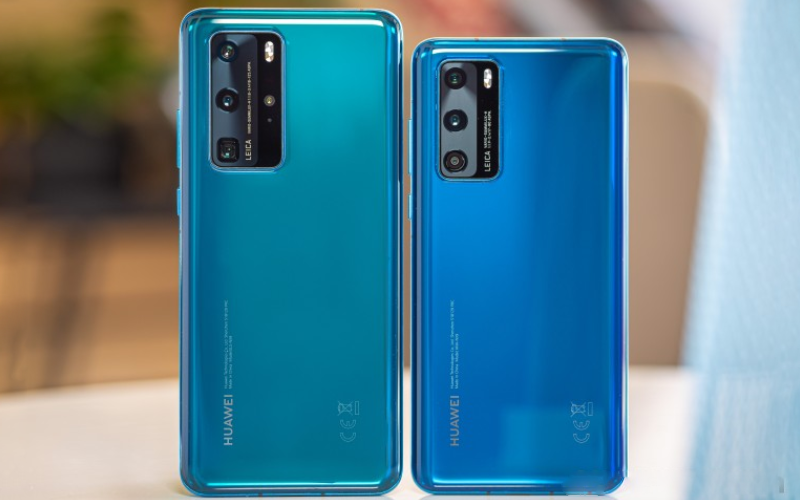
There is no ToF camera on the P40.
The primary ‘Ultra Vision’ camera presently utilizes another huge 1/1.28″ 50MP Quad Bayer sensor, with a RYYB channel. The sensor is genuinely greater than the Galaxy S20 Ultra’s 1/1.33″ 108MP imager. The equivalent applies for the binned pixel size – 2.44µm versus 2.4µm. The focal point has a 23mm comparable central length and a f/1.9 gap and it is balanced out.
The RIB shading channel has the green sub-pixels supplanted by yellow ones. Huawei says yellow permits the sensor to gather up to 40% more light than the normal RGGB channels and this change ought to convert into better picture quality in low-light.
This camera has improved self-adjust – presently it’s an all pixel omnidirectional stage location self-adjust. This implies not exclusively are there self-adjust fenders on every pixel, except they are 8 of them for each pixel. Thus, the camera’s self-adjust detecting has improved reaction to even subtleties though regular double pixel self-adjust frameworks make some hard memories with those. This additionally implies self-adjusting ought to likewise be commonly improved in low-light.
As a matter of course, this camera yields 12.5MP shots with a revealed central length of 27mm, which is diverse contrasted with the publicized ostensible 23mm central length that the camera should have. At the point when you switch somewhere in the range of 50MP and 12.5MP (default) mode, you can in fact notice that the high-res photographs offer more extensive field-of-see, which means some trimming is occurring before we get those 12-megapixel photographs.
The ultra-wide camera is by all accounts equivalent to on the P30 – a 16MP snapper behind 17mm f/2.2 focal point. Self-adjust is accessible, and you ought to have the option to shoot great closeups notwithstanding the ultrawide photographs.
The fax camera remains equivalent to on the P30, as well – it has a 8MP sensor behind 80mm f/2.4 focal point for 3x optical zoom. Optical adjustment and self-adjust are accessible on this camera.
Huawei P40 can shoot representations with its principle camera, while utilizing profundity data from the tele shooter. Furthermore, talking about representations, the P40 likewise includes an updated multi-range shading temperature sensor with help for 8 channels (up from 3) and it has AI AWB (white parity) calculation for much increasingly exact shading balance when making picture efforts.
The selfie camera remains equivalent to on the P30 – it’s a 32MP imager behind a 26mm f/2.0 focal point and with fixed core interest. The P40 Pro models appreciate self-adjust and it’s a bummer we didn’t get such on the P40. Hey now Huawei, enough with this negligible fracture!
The P40 additionally gets an IR camera close to its selfie, which examines your face top to bottom for a progressively secure Face Unlock.
How about we start with the sunshine photographs. The ones originating from the primary 50MP camera are spared as a matter of course in 4,096 x 3,072 pixels or 12.5MP and present exceptional quality. Their settled detail is praiseworthy even in territories of high multifaceted nature, the dynamic range is heavenly, no obvious commotion, and the hues are vivacious regardless of whether once in a while hotter than the real world.
While Huawei offers a committed HDR shooting mode, you won’t use it, ever. The camera of the P40 has improved Huawei XD Fusion Engine – the PR name behind the multi-stacking process – and Huawei as of now has a graduate degree in this – the photographs consistently exceed expectations in unique range.
There is a devoted High-res mode on the P40 – it utilizes the principle camera and it shoots in full 50MP. Snapping such a picture doesn’t take over a second and spares a high-res photograph with a somewhat more extensive field-of-view than the default 12MP mode.
Lamentably, the high-res mode can’t profit by all product deceives the default mode utilizes (like multi-stacking) and the 50MP are delicate with unsatisfying point of interest level. In the event that these 50MP shots are downscaled to 12.5MP – they won’t display more detail contrasted with the default photographs, however you will get more extensive FoV.
Proceeding onward to the ultrawide shooter. It’s a 16MP 17mm f/2.2 shooter – the equivalent on the P30, however not as amazing as the 40MP 18mm f/1.8 on the Pro models.
Anyway, the 16MP snaps from this camera are very acceptable. They are sharp enough at the inside, while the corners are delicate because of the programmed mutilation revision. The hues are pleasant, the difference is incredible, as is the dynamic range. Without a doubt, those are no place point by point as the ones originating from the P40 Pro yet are sufficient for the intermittent one-shot-display purposes.
Huawei offers a committed Super Macro mode that utilizes the ultrawide camera and is enacted consequently when a subject is excessively close for focal point of the fundamental camera. The pictures are acceptable, without a doubt, however we want to step back a piece and utilize the fundamental camera for closeups – its photographs are increasingly point by point and livelier.
The fax camera is diverse on the P40 when contrasted with the Pro – essentially it offers 3x optical and 5x half and half zoom rather than 5x optical and 10x cross breed. It’s additionally 8MP, however Huawei indeed upscales its photographs (it did likewise on the P30 Pro) to coordinate the 12.5 goals of the principle camera.
The 12.5MP pictures are sharp and definite, if not over honed to cover the upscaling. The hues and differentiation are superb, as is the dynamic range.
We would have favored for Huawei to leave those at 8MP as opposed to doing this superfluous upsizing, however we surmise negative behavior patterns hardcore.
The primary camera of the P40 snaps class-driving evening time pictures. Those show extraordinary degree of detail, adjusted presentation, great hues, exceptionally low clamor, and the ideal sharpness. The shading immersion wasn’t harmed by the absence of light and in general – those are among the best a cell phone can offer today.
In most low-light scenes the fax cam is set aside and in the event that you tap the 3x button, you’d end up with carefully zoomed and upscaled pictures. Having said that, under the correct conditions (over a specific light edge), the fax will dominate and it would catch a sensibly gorgeous shot, and you can utilize Night Mode to improve it, as well.
SOFTWARE
The Huawei P40 boots the EMUI 10.1. It’s the most recent adaptation of Huawei’s skin and it depends on Android 10. It has no Google benefits and has no entrance to the Play Store, yet we surmise that is old news as of now. Huawei offers its new exclusive Mobile Services total with Huawei’s AppGallery. More alternatives are accessible, however we’ll discuss those in a piece.
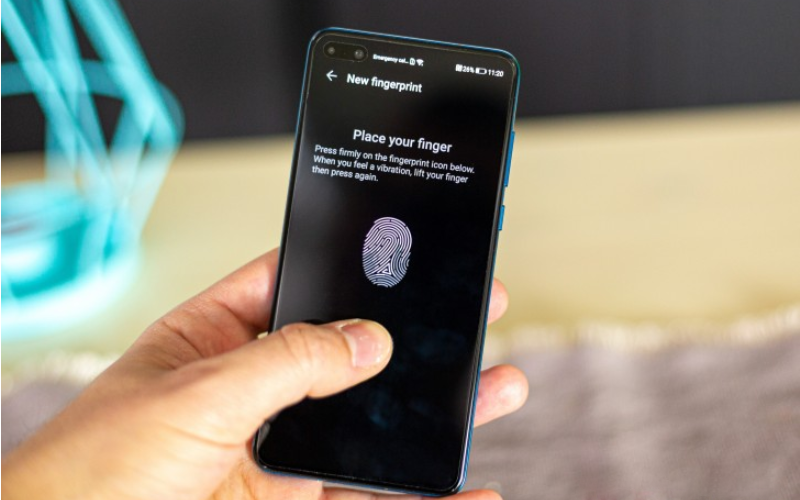
How about we start with how you open the Huawei P40. Both unique mark and IR-based Face Unlock are accessible and both can work one next to the other – whichever happens first. The under-show optical unique mark sensor is the quickest as of now accessible and it’s comparable to the ordinary scanners – it illuminates with a white light the second you contact it, and before you know it, you are on the homescreen.
On account of the front ToF camera, secure (read IR-profundity filter) Face Unlock is accessible like Apple’s Face ID. It works even in obscurity and is regularly quicker than the unique mark peruser as it checks and perceives your face before you even touch the screen.
The P40 default OS route is an iPhone-like signal – swipe up for Home, swipe up and stop halfway for Task switcher, or swipe from the left or right edge of the screen for Back. You can choose the great virtual catches, obviously.
And keeping in mind that we are discussing signals, here is an oldie but a goodie – Huawei is making the air motions a thing once more. Because of the IR camera at the front, the P40 can perceive a few motions, for example, get and wave, so you can do some touchless activities (COVID-19 doesn’t care for this).
In this way, you can take screen captures by hand and swipe to scroll. Those are cool however they couldn’t stick the first occasion when we saw them on the Galaxy Note 3, and we question if they will stick this time around, as well. This is simply excessively gimmicky.
From the telephone supervisor application, which is currently called Optimiser, you can get to alternate ways to capacity cleanup, battery settings, blocked numbers, Virus check controlled by Avast, and versatile information utilization.
Huawei’s Music application offers an approach to tune in to put away MP3s, and it likewise incorporates Huawei’s own music benefits in good locales.
Same goes for the restrictive Video application – it plays your neighborhood recordings, yet it additionally incorporates Huawei’s video spilling administration like YouTube. Huawei has banded together with BBC to convey all the more fascinating substance with regards to expansion to all amusing and inventive recordings you will discover inside Huawei’s own gushing servers.
Huawei’s Health application is pre-introduced, and it offers step tallying, among numerous different things. There’s a record administrator application and a note-taking application.
Huawei is yet to dispatch its TomTom-based Maps application, however here is trusting this happens soon enough. What’s more, since the P40 comes up short on a trade for Google’s area system, applications like Pokemon Go and Harry Potter: Wizards Unite can’t work.
At last, there was one simple approach to introduce Play Store and Play Services through the Chat Partner application, yet it is done working appropriately. In this way, until another endeavor is found – and as expected by both Huawei and Google – Play Services will stay off limits.
Should I Buy It?
The Huawei P40 is a decent all-round lead, conservative at that, and it will be exquisite to see it succeed. Sadly, Huawei has compromised where it shouldn’t have, and the specs left a severe taste which is the exact opposite thing the maker needs at this moment.
Indeed, the Huawei P40 is ground-breaking and 5G-proficient. We like that the 50MP UltraVision camera has been shared over all P40 models, as well. Be that as it may, they ought to have gone for highlight equality with regards to the 90Hz invigorate rate as well. Furthermore, the selfie self-adjust. What’s more, the battery charging abilities. What’s more, water security. The 40MP ultrawide camera would have been a colossal selling point, as well.
Huawei has essentially compromised, and keeping in mind that despite everything made for a decent telephone, it’s screamingly clear the P40 wasn’t intended to contend or exceed expectations, yet just to exist and possibly make its Pro kin look great.



